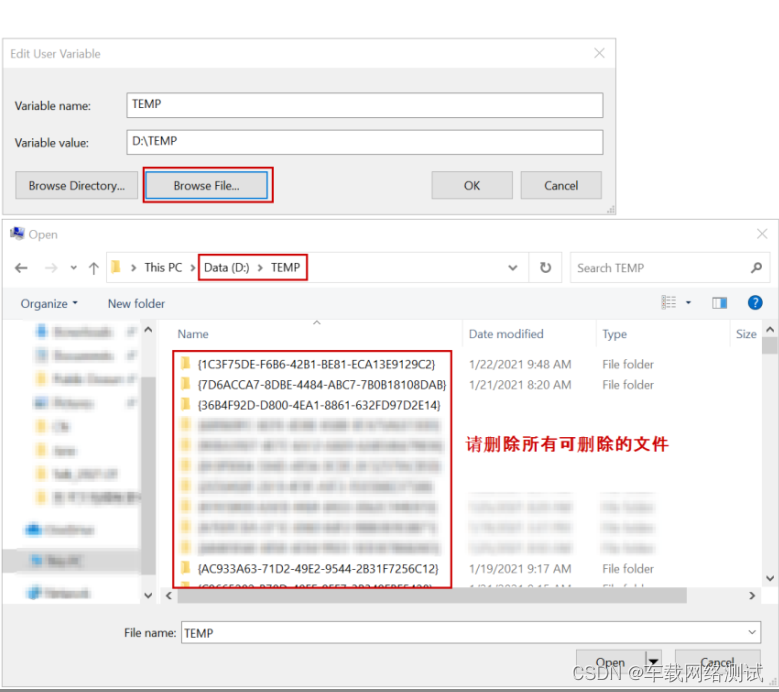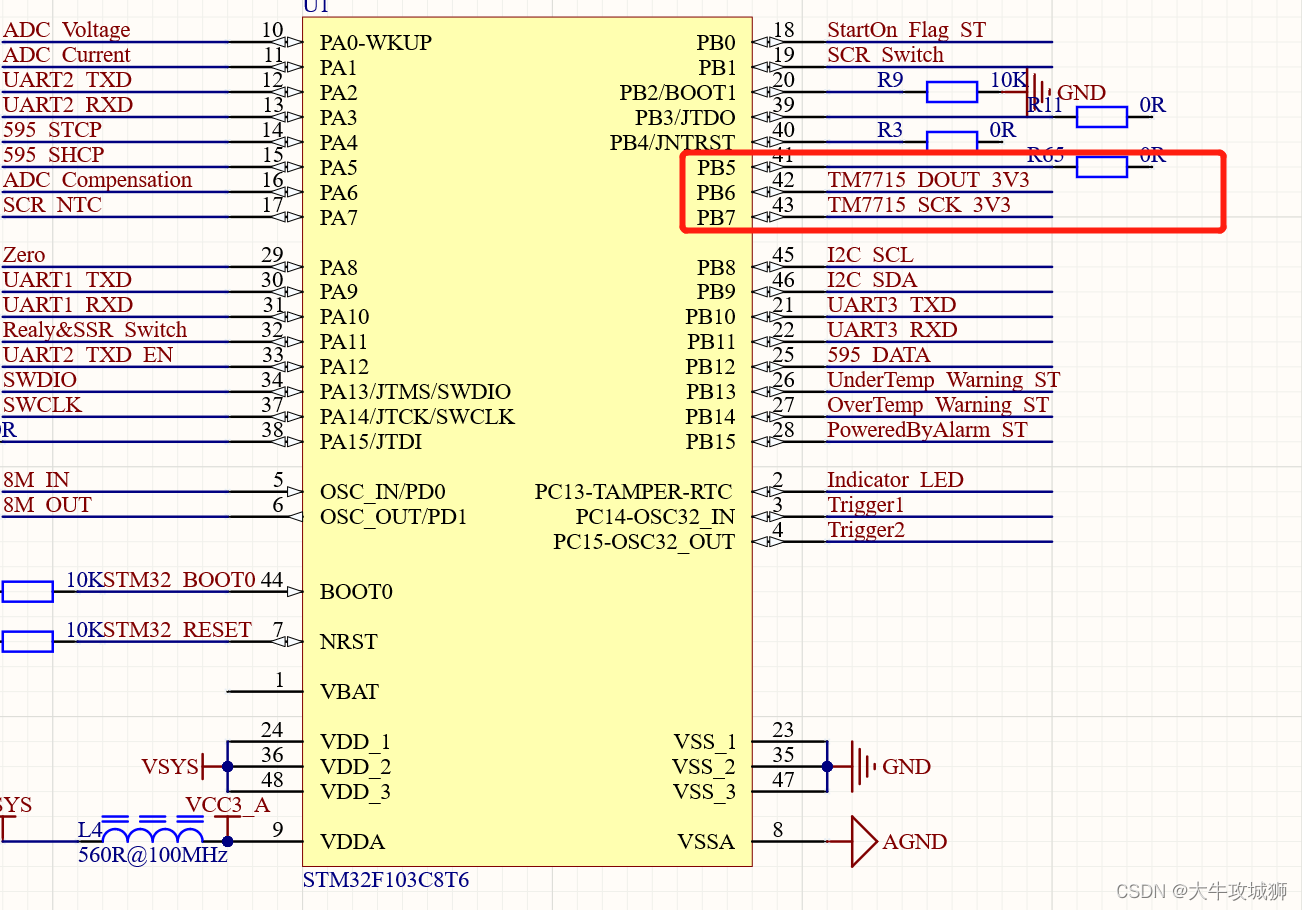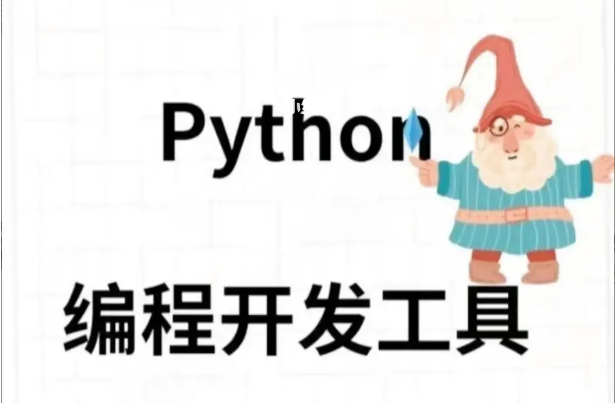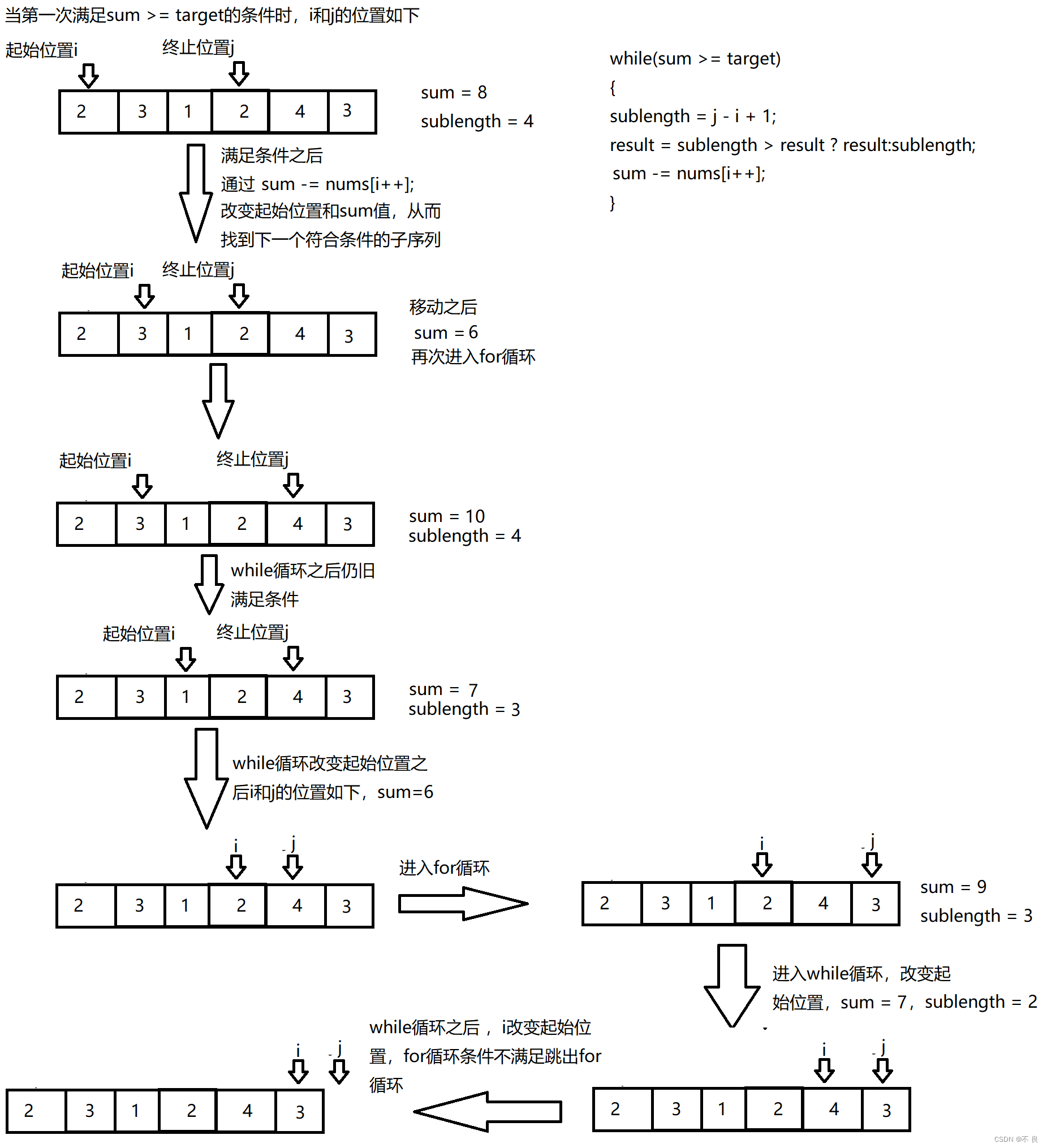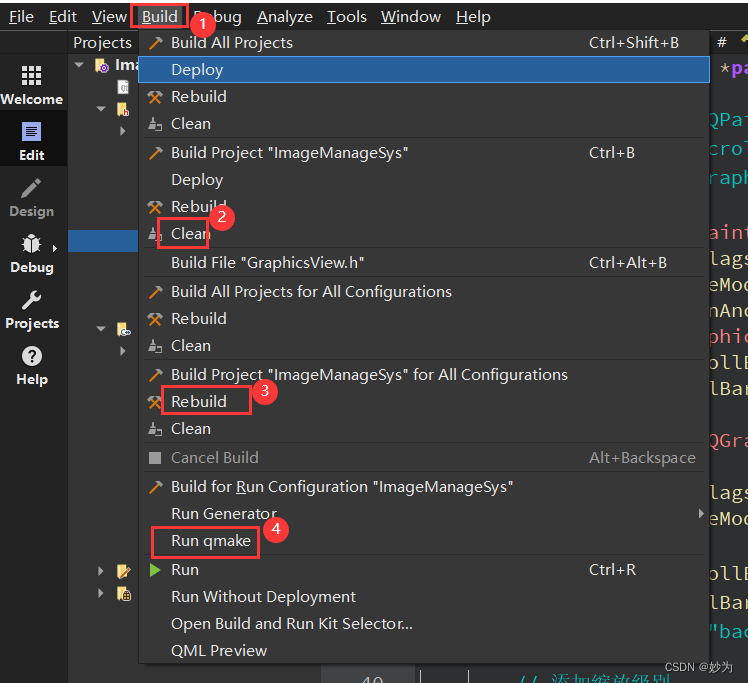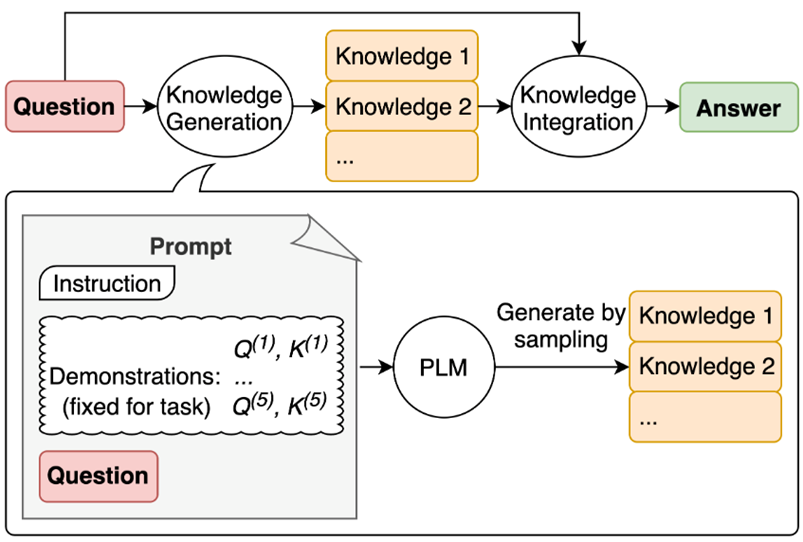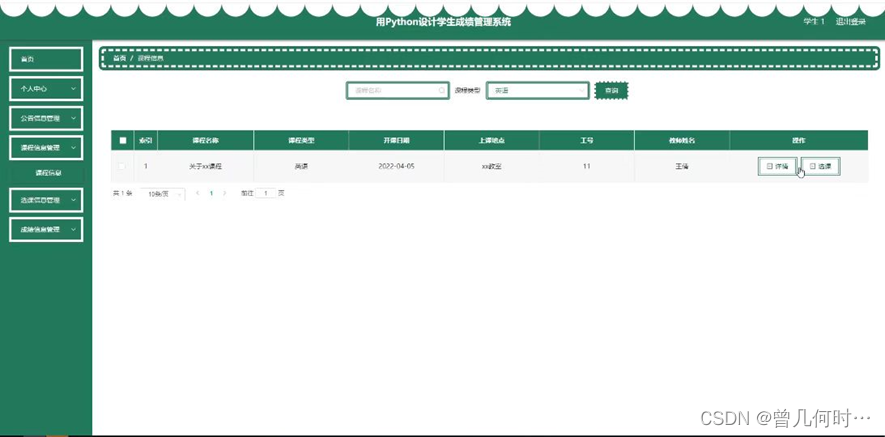目录
一、导入依赖
二、SwaggerConfig基础编程
三、Swagger 常用说明注解
1.@API
2.@ApiOperation
3.@ApiModel
4.ApiModelProperty
5.@ApiParam
6.@ApilmplicitParam
一、导入依赖
<!--开启Swagger -->
<!-- https://mvnrepository.com/artifact/io.springfox/springfox-swagger2 -->
<dependency>
<groupId>io.springfox</groupId>
<artifactId>springfox-swagger2</artifactId>
<version>2.7.0</version>
</dependency>
<!-- https://mvnrepository.com/artifact/io.springfox/springfox-swagger-ui -->
<dependency>
<groupId>io.springfox</groupId>
<artifactId>springfox-swagger-ui</artifactId>
<version>2.7.0</version>
</dependency>
<!-- 引入swagger-ui-layer包 /document.html-->
<!-- 访问 http://localhost:8888/document.html-->
<dependency>
<groupId>com.zyplayer</groupId>
<artifactId>swagger-mg-ui</artifactId>
<version>1.0.6</version>
</dependency>二、SwaggerConfig基础编程
import com.google.common.base.Predicates;
import org.springframework.context.annotation.Bean;
import org.springframework.context.annotation.Configuration;
import org.springframework.core.env.Environment;
import org.springframework.core.env.Profiles;
import springfox.documentation.builders.ApiInfoBuilder;
import springfox.documentation.builders.PathSelectors;
import springfox.documentation.builders.RequestHandlerSelectors;
import springfox.documentation.service.ApiInfo;
import springfox.documentation.service.Contact;
import springfox.documentation.spi.DocumentationType;
import springfox.documentation.spring.web.plugins.Docket;
import springfox.documentation.swagger2.annotations.EnableSwagger2;
import java.util.ArrayList;
@Configuration //配置类
@EnableSwagger2// 开启Swagger2的自动配置
public class SwaggerConfig {
@Bean
public Docket webApiConfig() {
Docket docket = new Docket(DocumentationType.SWAGGER_2)
.groupName("webApi")
.apiInfo(apiInfo())
.select()
.paths(Predicates.and(PathSelectors.regex("/api/.*")))
.build();
return docket;
}
@Bean
public Docket customApiConfig() {
Docket docket = new Docket(DocumentationType.SWAGGER_2)
.groupName("customApi")
.apiInfo(customApiInfo())
.select()
.paths(Predicates.and(PathSelectors.regex("/custom/.*")))
.build();
return docket;
}
private ApiInfo apiInfo() {
//配置文档信息
Contact contact = new Contact("**", "184375****@qq.com", "184375****@qq.com");
return new ApiInfo(
"管理系统后端接口文档Swagger", // 标题
"管理系统后端接口", // 描述
"v1.0", // 版本
"184375****@qq.com", // 组织链接
contact, // 联系人信息
"Apach 2.0 许可", // 许可
"许可链接", // 许可连接
new ArrayList<>()// 扩展
);
}
private ApiInfo customApiInfo() {
return new ApiInfoBuilder().title("用户功能的API文档")
.description("本文描述了客户功能的api接口定义")
.version("1.0")
.contact(new Contact("***", "", "184375****@qq.com"))
.build();
}
}三、Swagger 常用说明注解
1.@API
是用在Controller类上,表明是swagger资源
拥有两个属性:values、tags
@Api(tags = "管理员最全功能模块")2.@ApiOperation
是用在Controller方法上,表示一个http请求的操作
value用于方法描述
notes用于提示内容
tags可以重新分组
@ApiOperation("管理员新增**")3.@ApiModel
使用场景:在实体类上边使用,标记类时swagger的解析类

案例:
@ApiModel(value="Manager对象", description="管理员")4.ApiModelProperty
使用场景:使用在被 @ApiModel 注解的模型类的属性上
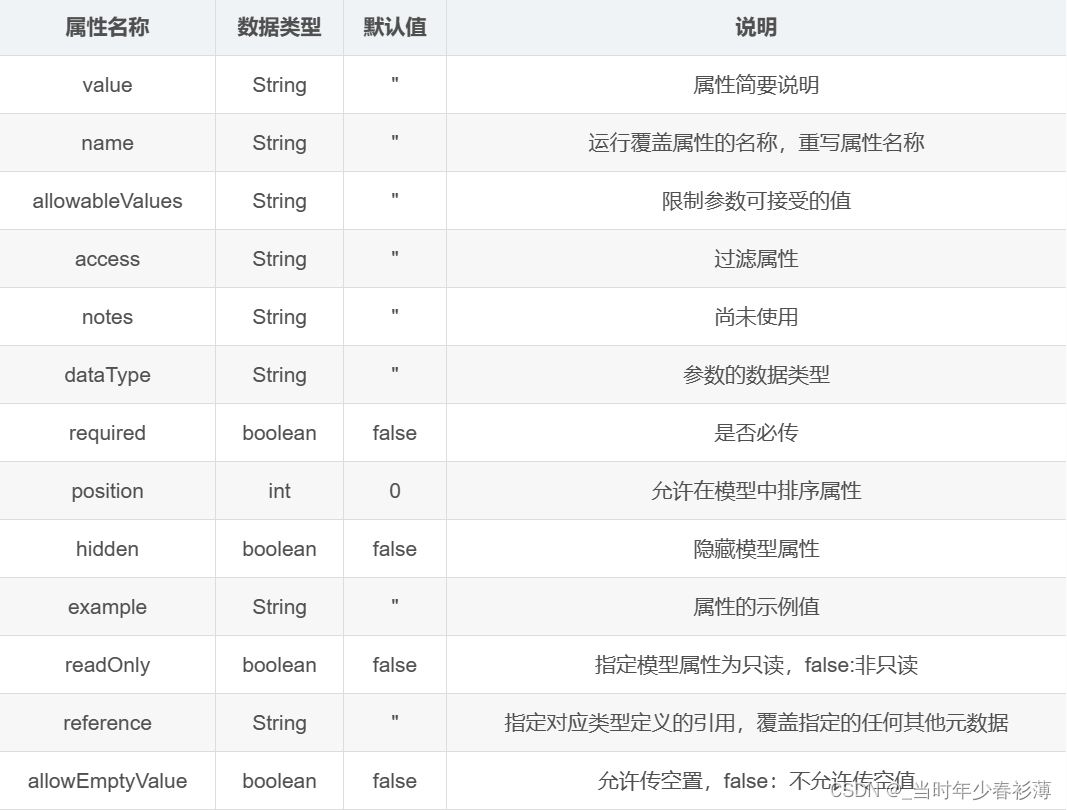
案例:
@ApiModelProperty(value = "管理员姓名")
private String name;5.@ApiParam
参数描述,用在每个参数前面
@PostMapping("/create")
// 注:这里如果使用 @ApiImplicitParam 会出现无法识别的问题
public Response createMerchants(
@ApiParam(name = "request", value = "创建商户请求对象") @RequestBody CreateMerchantsRequest request)
6.@ApilmplicitParam
参数描述,可用在方法头
@ApiImplicitParams({
@ApiImplicitParam(name = "id", value = "商户ID")
})
@GetMapping("/{id}")
public Response getMerchantsInfo(@PathVariable Integer id) {
return null;
}
